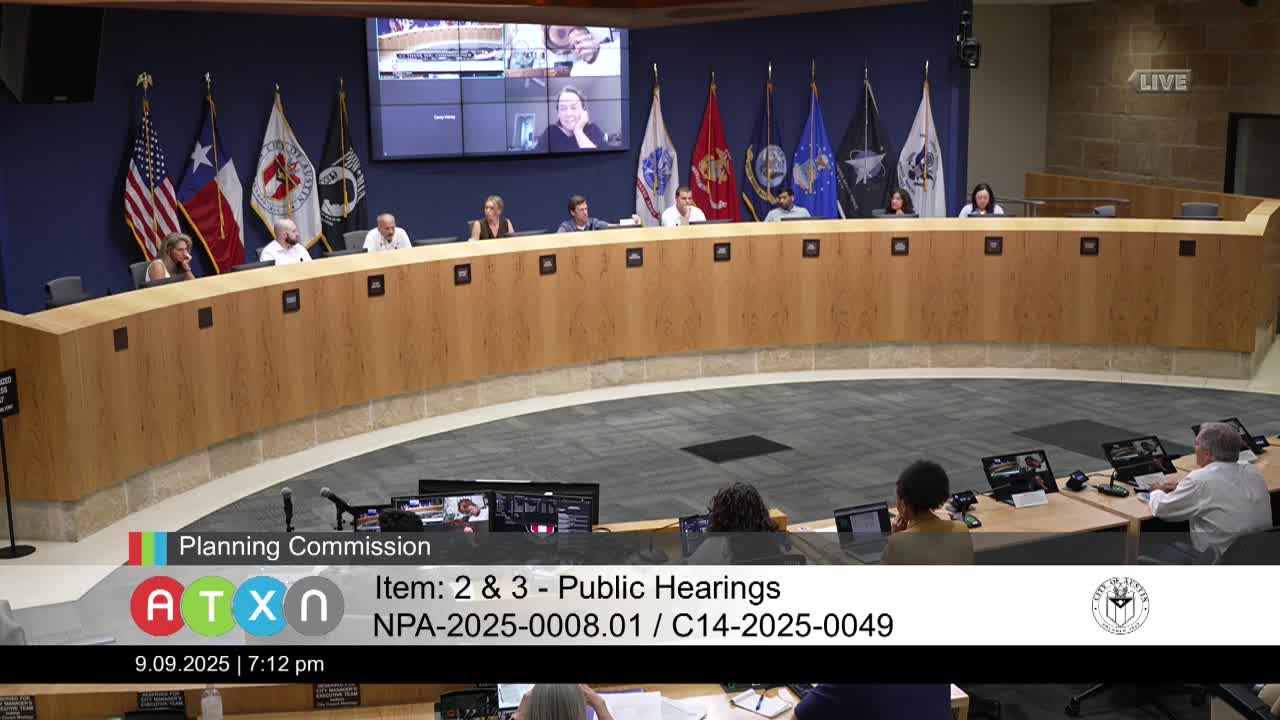East Austin Developers Discuss Compromise on Neighborhood Redevelopment and Traffic Concerns
September 09, 2025 | Austin, Travis County, Texas
This article was created by AI summarizing key points discussed. AI makes mistakes, so for full details and context, please refer to the video of the full meeting. Please report any errors so we can fix them. Report an error »

In a recent meeting of the Austin Planning Commission, discussions centered around a proposed redevelopment project that has sparked significant community interest and concern. The meeting highlighted ongoing negotiations between developers and neighborhood representatives, aiming to find a compromise that addresses both development goals and community needs.
One of the primary issues raised was the desire of local residents to maintain certain prohibitions on commercial uses within the redevelopment area. Neighborhood representatives expressed concerns about potential negative impacts on quality of life, including increased traffic and gentrification. They emphasized the importance of preserving the character of the neighborhood and ensuring that any new developments do not disrupt the community's fabric.
Commissioners acknowledged the traffic implications of the proposed project, with assurances that a traffic impact analysis would be conducted at the site plan stage. This analysis is crucial to understanding how the redevelopment might affect local traffic patterns and accessibility.
Support for the project was also voiced by some commissioners, who noted the potential benefits of the redevelopment, including the preservation of historical elements and the creation of public spaces. They pointed to successful past projects by the developer that have positively transformed neighborhoods in East Austin.
The meeting concluded with a unanimous vote in favor of the applicant's request, signaling a step forward in the redevelopment process. However, the ongoing dialogue between developers and the community remains essential to address concerns and ensure that the project aligns with the interests of local residents.
As Austin continues to grow, the balance between development and community preservation will be a critical focus for city planners and residents alike. The outcomes of this project could set a precedent for future developments in the area, highlighting the importance of collaboration and communication in urban planning.
One of the primary issues raised was the desire of local residents to maintain certain prohibitions on commercial uses within the redevelopment area. Neighborhood representatives expressed concerns about potential negative impacts on quality of life, including increased traffic and gentrification. They emphasized the importance of preserving the character of the neighborhood and ensuring that any new developments do not disrupt the community's fabric.
Commissioners acknowledged the traffic implications of the proposed project, with assurances that a traffic impact analysis would be conducted at the site plan stage. This analysis is crucial to understanding how the redevelopment might affect local traffic patterns and accessibility.
Support for the project was also voiced by some commissioners, who noted the potential benefits of the redevelopment, including the preservation of historical elements and the creation of public spaces. They pointed to successful past projects by the developer that have positively transformed neighborhoods in East Austin.
The meeting concluded with a unanimous vote in favor of the applicant's request, signaling a step forward in the redevelopment process. However, the ongoing dialogue between developers and the community remains essential to address concerns and ensure that the project aligns with the interests of local residents.
As Austin continues to grow, the balance between development and community preservation will be a critical focus for city planners and residents alike. The outcomes of this project could set a precedent for future developments in the area, highlighting the importance of collaboration and communication in urban planning.
View full meeting
This article is based on a recent meeting—watch the full video and explore the complete transcript for deeper insights into the discussion.
View full meeting
